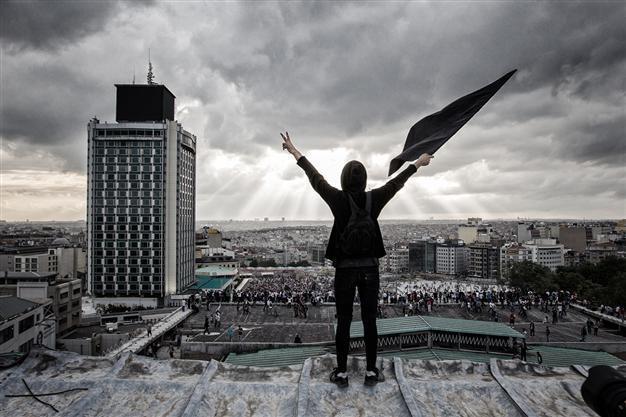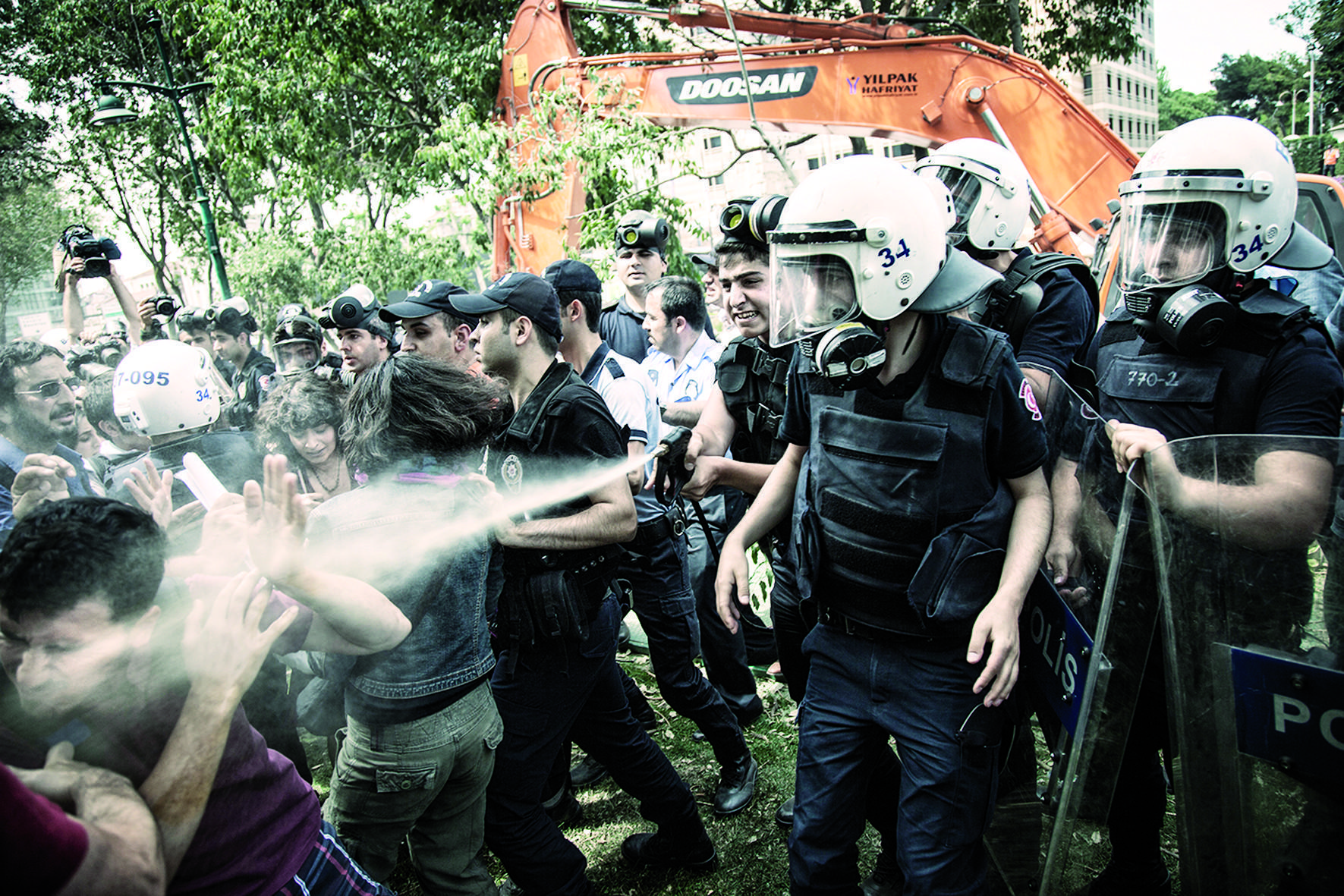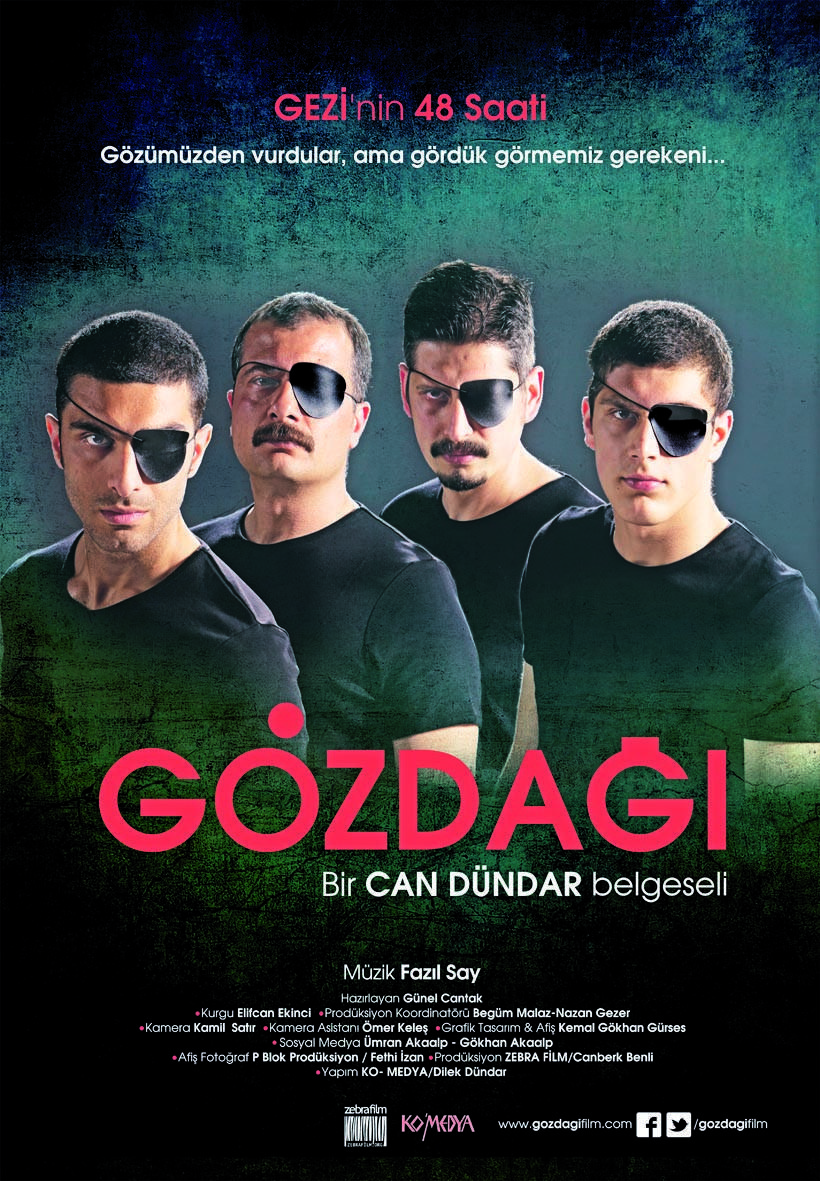The Gezi protests: I know what you did last summer
Emrah GÜLER

For the last couple of weeks, thousands have been reminding one another on social media and the web not to forget last year’s history in the making.
“I Know What You Did Last Summer” read one invitation to a Facebook event on May 31. “Could we have met somewhere? Could we have strolled the streets together for resistance? Could we have met here, in Kuğulu Park [Ankara’s famed park with swans]? Could we have worried about the swans exposed to tear gas?” This was just one of dozens of similar events shared on Facebook for the same day.
The resistance referred to here is the Gezi protests that escalated into nationwide protests with over 2 million on streets for nearly a month last summer. Kuğulu Park was one of the major gathering areas for protesters in Ankara, later transforming into one of the centers of nationwide forums. And the tear gas is the ultimate symbol of the unexpected police brutality that turned the peaceful protests into violent clashes across the country.

May 31 was the anniversary of the Gezi protests, the peaceful sit-in to protest plans to redevelop one of the remaining green areas in the heart of Istanbul, Gezi Park, that turned into the biggest mass protests in the history of Turkey. For the last couple of weeks, thousands have been reminding one another on social media and the web not to forget last year’s history in the making.
The heated event invitations for the anniversary reflected some of the defining characteristics of last year’s protests and its aftermath: humor, creativity, the constant reminder of the brutality that left thousands injured and some dead, and a romanticized recreation of a resistance familiar, and sometimes not so familiar, from past decades that became at once this country’s very own.
Social media and the Internet were abuzz with compilations, timelines, lists and memorials. One website published compilations of the graffiti that displayed some great examples of bona fide humor. In another, you could see in one go the hypocritical tweets of Istanbul Gov. Hüseyin Avni Mutlu. Line.do gave day-by-day timeline of the protests in photos, videos and news stories.
Documentary and exhibitionsLiving museums, reading events in the green, exhibitions, film screenings, a revival of the park forums in the aftermath of Gezi were other chosen mediums of celebration of the first anniversary of the Gezi protests. That said, many prepared their backpacks with masks and homemade solutions for the immediate effects of tear gas, as well as chargers for the smart phones that have kept tens of thousands on the streets (and at home) informed through social media. The police have not been skimping on preparations for the anniversary protests either, dispatching their TOMA water cannon vehicles to the major protest sites likely to gather crowds, like Istanbul’s Taksim and Ankara’s Kızılay.

One of the anticipated high points of the first year celebrations has been acclaimed documentary director, biographer and journalist Can Dündar’s documentary on Gezi, “Gözdağı.” The literal translation of the documentary is “intimidation,” but the word was chosen so as to include the word for eye, “göz.” The film relates the first 48 hours of the protests, with a focus on six protesters who have lost one of their eyes due to tear gas canisters. The film includes footage from smart phones during the protests as well.
“The Gezi spirit taught us how to see. It taught us how to be courageous, how to resist, how to share,” wrote Dündar, ever the romantic, for his documentary. “We made this documentary through what we learned at Gezi. This is the documentary of those who have lost their eyes. The story of a country that has started to see, of how a country was shot in the eye.”
The film premiered on May 30 to an excited and zealous crowd at the Caddebostan Culture Center in Istanbul’s Kadıköy municipality, a supporter of the protests and protesters since the first days. The same day and the following day, on the actual anniversary of the beginning of the protests, “Gözdağı” was screened in major parks across the country, as well as New York, London, Berlin, Oslo and Ottawa, among other cities around the globe.
Another highlight of the anniversary have been the exhibitions. “Gezi Park Resistance” is one of the many coinciding with the anniversary. The exhibition opened last week in Istanbul, again at the Caddebostan Culture Center, to a welcome reception. The 200 photos were taken by 21 photojournalists during the protests, with the short film “Resist” by Serkan Ocak, part of the exhibition as well. Other exhibitions hoped to reignite last year’s adrenaline in other venues in Istanbul, as well as other cities like Kocaeli and Bursa. Gezi has succeeded in establishing its own sense of nostalgia in the short span of just one year. Here’s hoping it will turn out to be nostalgia for the beginning of the good-old days in Turkey.

 May 31 was the anniversary of the Gezi protests, the peaceful sit-in to protest plans to redevelop one of the remaining green areas in the heart of Istanbul, Gezi Park, that turned into the biggest mass protests in the history of Turkey. For the last couple of weeks, thousands have been reminding one another on social media and the web not to forget last year’s history in the making.
May 31 was the anniversary of the Gezi protests, the peaceful sit-in to protest plans to redevelop one of the remaining green areas in the heart of Istanbul, Gezi Park, that turned into the biggest mass protests in the history of Turkey. For the last couple of weeks, thousands have been reminding one another on social media and the web not to forget last year’s history in the making. One of the anticipated high points of the first year celebrations has been acclaimed documentary director, biographer and journalist Can Dündar’s documentary on Gezi, “Gözdağı.” The literal translation of the documentary is “intimidation,” but the word was chosen so as to include the word for eye, “göz.” The film relates the first 48 hours of the protests, with a focus on six protesters who have lost one of their eyes due to tear gas canisters. The film includes footage from smart phones during the protests as well.
One of the anticipated high points of the first year celebrations has been acclaimed documentary director, biographer and journalist Can Dündar’s documentary on Gezi, “Gözdağı.” The literal translation of the documentary is “intimidation,” but the word was chosen so as to include the word for eye, “göz.” The film relates the first 48 hours of the protests, with a focus on six protesters who have lost one of their eyes due to tear gas canisters. The film includes footage from smart phones during the protests as well.